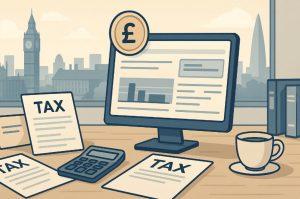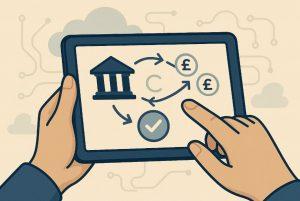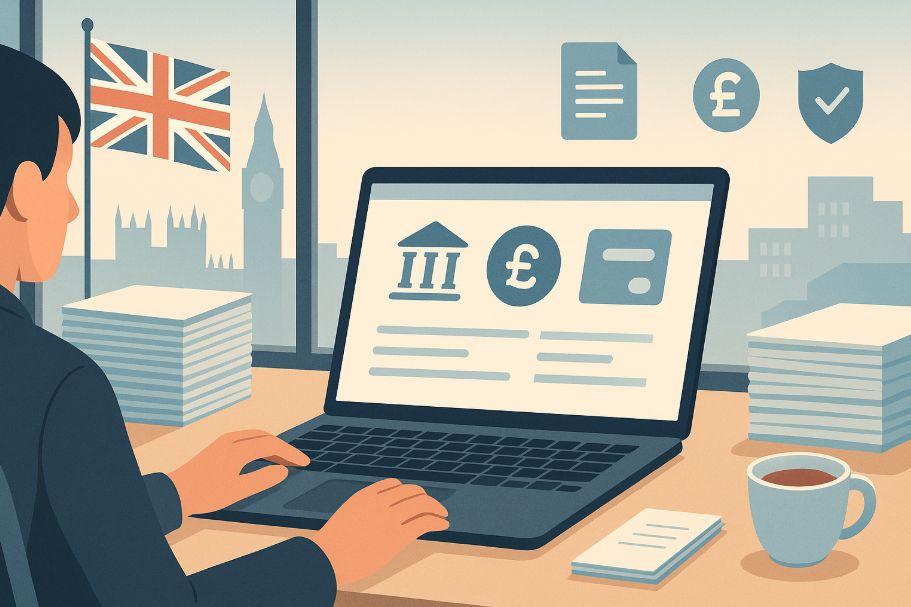For individuals and businesses across the UK and especially in London’s fast-paced financial landscape effective management of HMRC tax bank accounts is essential. Paying taxes correctly and on time isn’t just a legal obligation; it’s a financial responsibility that affects your compliance, reputation, and peace of mind.
From choosing the right payment method to verifying bank details and avoiding penalties, understanding how to manage your interactions with HMRC’s banking systems can make a significant difference. This guide offers a clear and comprehensive look into how to stay on top of your tax payments without unnecessary stress.
What Are HMRC Tax Bank Accounts?

HMRC tax bank accounts are official bank accounts used by His Majesty’s Revenue and Customs to receive payments for a range of tax obligations. These can include self-assessment tax, corporation tax, VAT, PAYE, and National Insurance contributions.
Each type of tax payment may require a different account number, sort code, and payment reference. Sending funds to the wrong account or including incorrect information can delay your payment or cause it to be misapplied. This could lead to fines, interest charges, or unnecessary correspondence with HMRC to correct the issue.
For these reasons, it is vital to know exactly which HMRC bank account your payment needs to go to, and what information should accompany it.
How Can You Find the Correct HMRC Bank Account Details for Your Tax Payment?
Finding the right HMRC bank account information begins with visiting the official UK government website, GOV.UK. Here, HMRC provides up-to-date account details specific to the tax you’re paying. This includes the sort code, account number, and payment reference guidelines.
Trusting unofficial sources or even relying on saved bank details from previous years could lead to errors. HMRC occasionally changes payment information or account structures, so checking the correct details before every payment is a habit worth forming.
In addition, it’s important to ensure that your payment reference is exactly as required. This reference links the payment to your personal or business tax record, and errors in this field can result in delays in processing.
What Are the Different Ways to Pay HMRC Taxes in the UK?
HMRC provides several ways to make tax payments, each offering different levels of convenience and processing time. One of the most popular options is online banking via Faster Payments, which is usually completed on the same or next working day.
Those making larger payments, such as corporation tax or VAT, may choose to use CHAPS, which allows for same-day transfers, especially when time is critical. Alternatively, BACS transfers are suitable for non-urgent payments but can take up to three working days to clear.
It’s also possible to pay by debit or credit card through HMRC’s online portal. However, credit card payments may include transaction fees and are limited in their availability.
While Direct Debit is another viable option, especially for recurring tax obligations, this method requires set-up time and isn’t suitable for last-minute payments. In some cases, individuals may still pay via cheque or at a bank, though these options are being phased out due to the rise in digital tax systems.
How Can You Set Up a Direct Debit to Pay HMRC Tax Automatically?

Direct Debit is one of the most effective ways to ensure your HMRC payments are made on time without manual intervention. To set this up, users must log into their HMRC online account and navigate to the relevant tax section, such as VAT or self-assessment. From there, you’ll be prompted to input your bank account details and authorise the direct debit.
Once authorised, HMRC will handle the collection of the payment when it becomes due. However, Direct Debit set-ups must be completed several days before the payment deadline to ensure processing is successful. It’s also worth noting that Direct Debits can be cancelled or modified at any time, offering flexibility alongside automation.
By automating tax payments, individuals and businesses can reduce the risk of forgetting a deadline and avoid late payment penalties, which can accumulate quickly.
How Do You Use Payment References Correctly to Avoid Delays?
The payment reference is perhaps the most overlooked yet critical aspect of making a tax payment. This code, which varies depending on the type of tax, ensures that HMRC correctly allocates your payment to your account.
For example, self-assessment tax payments require your 10-digit Unique Taxpayer Reference (UTR), while VAT payments are linked to your nine-digit VAT registration number. Corporation tax references are even more specific, typically consisting of a 17-character reference provided in HMRC’s payment instructions.
Incorrectly entering your payment reference, or using a reference from a prior tax year or different tax type, can delay your payment processing or lead HMRC to believe no payment was made. This can result in interest charges or fines, even if the funds were received.
Double-checking your payment reference each time, and copying it exactly as shown in your HMRC account (without adding extra spaces or characters), is an essential practice.
Can You Link HMRC Tax Payments with Online Accounting Software?
With the government’s Making Tax Digital (MTD) initiative, more taxpayers and businesses are turning to accounting software to manage their HMRC interactions. Software like QuickBooks, Xero, FreeAgent, and Sage can integrate directly with HMRC systems, making it easier to submit returns, generate tax reports, and schedule payments.
These platforms not only help with compliance but also simplify tracking and budgeting. Businesses can view upcoming tax obligations, monitor cash flow, and ensure that payments are scheduled correctly all from a central dashboard.
For small businesses and self-employed individuals in London who often juggle multiple financial responsibilities, linking HMRC with accounting tools can save time and reduce administrative errors.
What Should You Do If You Sent Tax to the Wrong HMRC Bank Account?

Sending a tax payment to the wrong account can happen, particularly when managing multiple tax obligations or accounts. If you realise an error, it’s important to act quickly.
Contact HMRC’s payment support line immediately with full payment details, including the date, amount, sort code, account number used, and the incorrect reference (if applicable). HMRC can usually trace the payment and allocate it correctly, or refund it so that you can resend it using the right information.
Having a record of your payment such as a bank statement or payment confirmation will support your case and help resolve the issue more efficiently.
When Are HMRC Tax Payment Deadlines and How Can You Track Them?
Different taxes come with different payment deadlines, and missing them can lead to unnecessary stress and financial penalties. Self-assessment tax is typically due by 31 January each year, while corporation tax must be paid nine months and one day after the end of your accounting period.
VAT payments are usually due one month and seven days after the end of your VAT period, and PAYE payments are typically due on the 22nd of each month.
To keep on top of deadlines, you can use calendar reminders, mobile alerts, or integrated features within accounting software. Some businesses even appoint a tax advisor or finance manager specifically to monitor compliance. Whichever approach you choose, the key is to be proactive, not reactive.
How Can Businesses in London Manage Multiple HMRC Tax Accounts Effectively?
Businesses in London, particularly those with employees, property, or complex income streams, may be required to manage several HMRC accounts at once. This can include corporation tax, VAT, PAYE, and others.
Keeping these accounts organised is vital. Assigning responsibility to a qualified accountant or finance officer can reduce the risk of errors. Some businesses also open dedicated bank accounts for each tax type to simplify payment tracking and audits.
Furthermore, integrating tax management into your regular accounting process through digital software or spreadsheet systems allows you to monitor outstanding liabilities in real-time and allocate funds accordingly.
In London’s competitive business landscape, efficient tax management can be the difference between staying compliant and falling into costly traps.
How Secure Are HMRC Bank Transfers and What Should You Watch Out For?

HMRC employs strong security protocols, but taxpayers must also take responsibility for ensuring their payments are safe. Cybercriminals have become increasingly sophisticated in mimicking HMRC emails, texts, and websites.
To protect yourself, always access HMRC services through the official GOV.UK domain. Avoid clicking on links in unsolicited emails or messages, and never share your UTR or bank details with unverified sources. Two-factor authentication should also be enabled on your HMRC online account for an extra layer of security.
Before making any payment, confirm that the bank details match the information provided on GOV.UK. Fraudsters may use small variations to trick users into sending payments to the wrong account.
How Can You Confirm If HMRC Received Your Tax Payment?
Once you’ve made a payment, it’s natural to want confirmation. You can check the status of your payment by logging into your HMRC online account and visiting the “Payment History” or “View Account” section. This will show whether your payment has been received and allocated to the correct period.
If your payment isn’t visible within five working days, it’s worth contacting HMRC with your payment reference and transaction details. Keeping a record of the payment, such as a confirmation email or bank statement, can be helpful if there’s any dispute or delay.
What Support Does HMRC Offer for Managing Tax Bank Payments?
HMRC offers a range of support services to help individuals and businesses manage their tax payments. These include dedicated helplines for each type of tax, live chat options, and detailed guides available on GOV.UK.
Additionally, users can consult with a tax agent or accountant who is authorised to deal with HMRC on their behalf. For businesses, especially those operating in London with complex tax structures, having professional advice can save time and ensure compliance with evolving tax regulations.
Conclusion
Effectively managing your HMRC tax bank accounts starts with understanding what’s required from the correct bank details and references to payment deadlines and methods. By adopting a proactive approach, using trusted tools and platforms, and staying vigilant about deadlines and potential fraud, you can ensure smooth and secure interactions with HMRC.
Whether you’re an individual managing a self-assessment payment or a business juggling multiple tax accounts, the key lies in preparation, precision, and reliable systems. In a city like London, where time and resources are precious, mastering this area of financial management can lead to significant long-term benefits.
FAQs About HMRC Tax Bank Accounts
How do I check my HMRC payment history online?
You can check your payment history by logging into your HMRC account and navigating to the section relevant to the tax type. It displays recent transactions and any outstanding balances.
Is it okay to use saved bank details for HMRC payments?
It’s best to verify HMRC bank details before every payment on GOV.UK, as they may change or differ depending on the tax you’re paying.
What should I do if my HMRC payment isn’t showing up?
Wait 3–5 working days and then check your HMRC online account. If the payment still doesn’t appear, contact HMRC with your transaction reference.
Are there any fees for paying HMRC by credit card?
Yes, credit card payments can incur processing fees, and HMRC limits which cards are accepted. Debit cards are generally preferred.
Can I pay HMRC from a non-UK bank account?
Yes, but international payments may take longer and require special bank details like IBAN and SWIFT codes, which are provided on GOV.UK.
How do I set up reminders for tax deadlines?
Use calendar apps, task managers, or your accounting software to set recurring alerts. HMRC also sends reminder emails if you’re registered for digital communication.
Is it mandatory to use accounting software with HMRC?
For VAT-registered businesses above the threshold, yes under Making Tax Digital rules. For other taxes, it’s optional but recommended.









Leave feedback about this